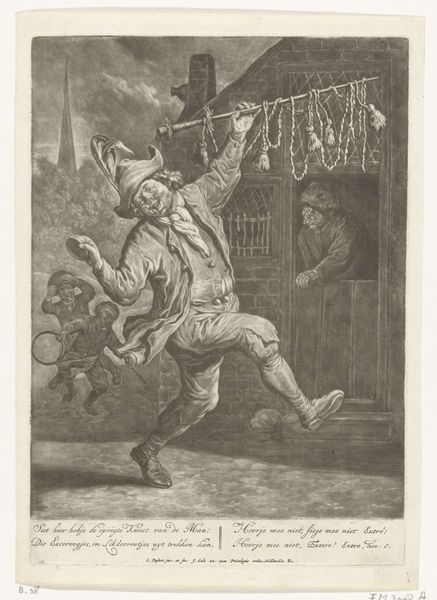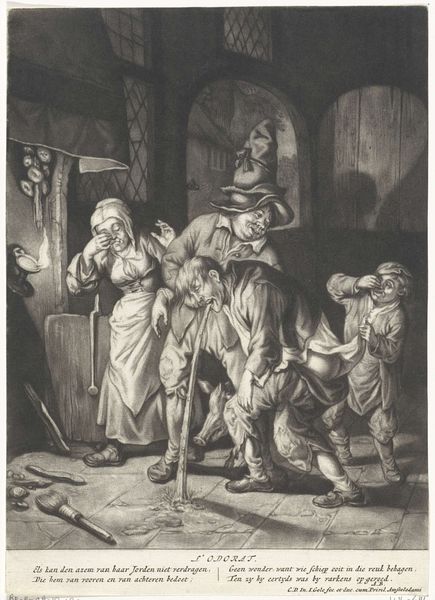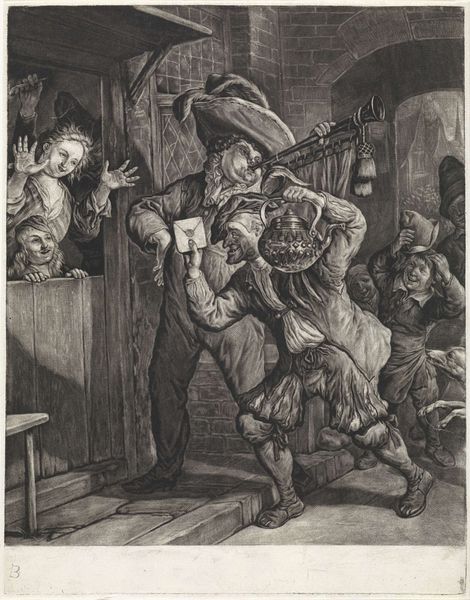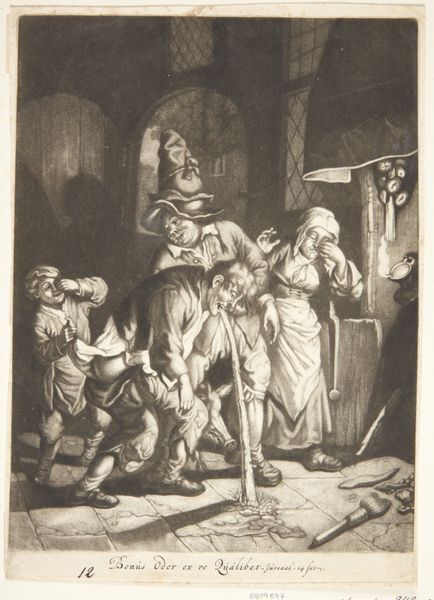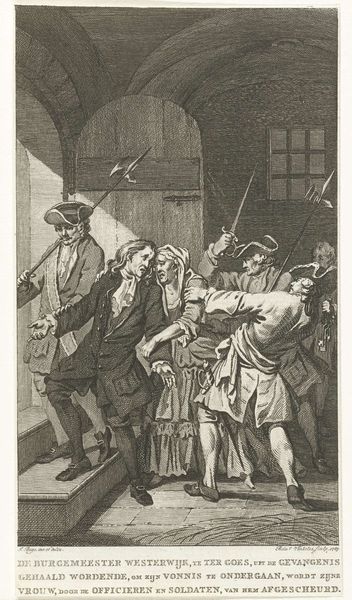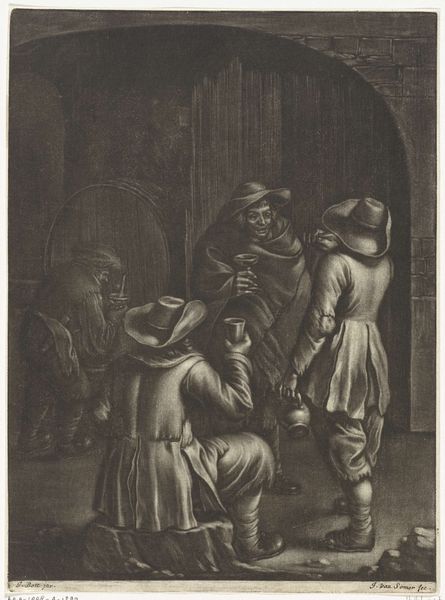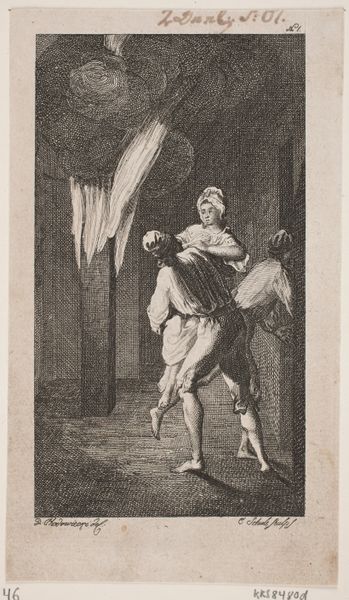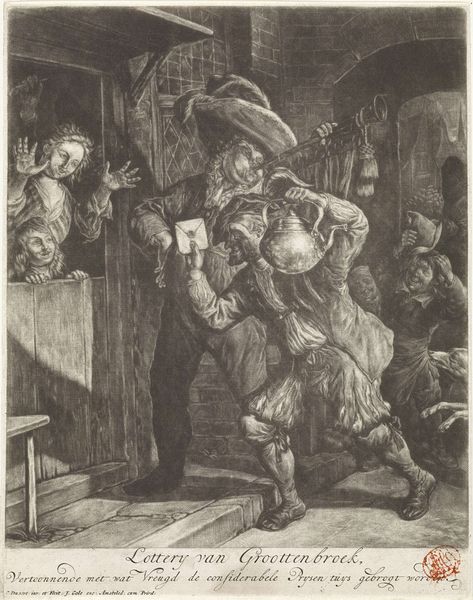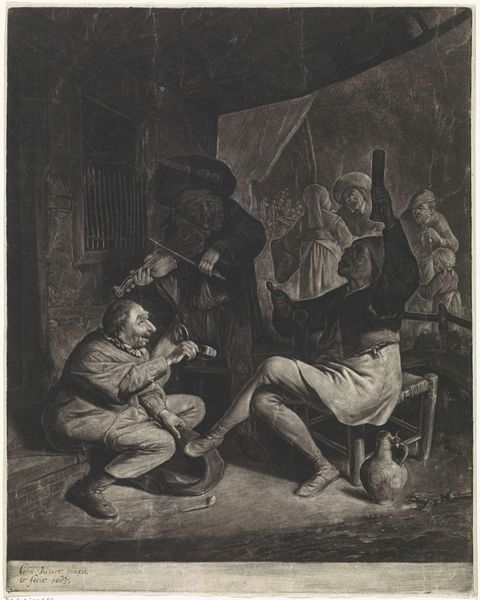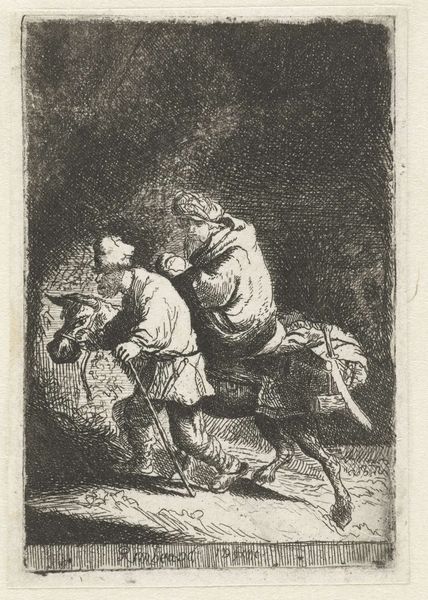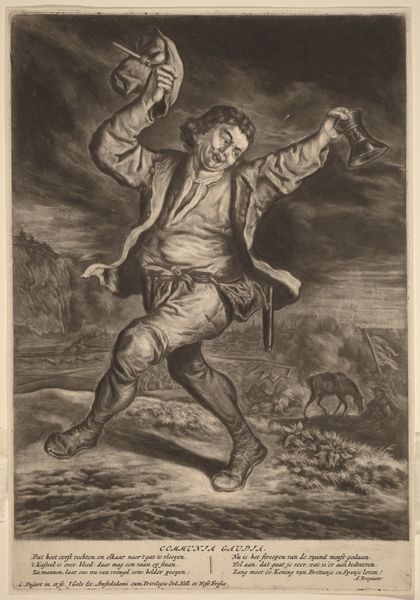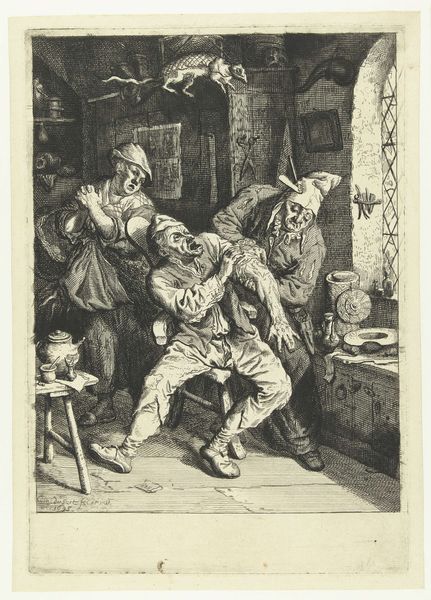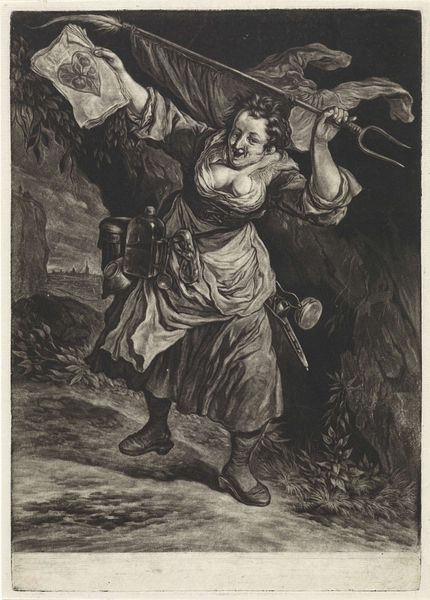
print, etching
#
narrative-art
#
baroque
# print
#
etching
#
figuration
#
genre-painting
Dimensions: height 252 mm, width 180 mm
Copyright: Rijks Museum: Open Domain
Curator: Ah, yes, this print, etched by Cornelis Dusart around 1700, titled "The Corn Cutter." What is your initial reaction to its construction? Editor: The most striking element is definitely the dynamism, an almost absurd, joyous energy conveyed through the figure's exaggerated movement. What is the source of this commotion? Curator: Dusart here masterfully employs contrasting diagonals to build tension. Note how the primary figure’s body cuts against the implied lines of the building, generating visual excitement. The whole structure tilts, threatens to topple. Editor: Fascinating! I’m drawn to the symbolism inherent in the tassels hanging above. In a world where health was so often tied to folklore and local tradition, I wonder what they signified here? Were they charms to protect his services from any malevolent spirits? Curator: The graphic precision in this work creates incredible texture. The deep, cross-hatched shadows, alongside the white, stark highlights... observe how they serve to sculpt each form, granting tangible volume to an otherwise flat, two-dimensional surface. Editor: I notice that children mirroring his exuberance and vitality flank this protagonist to amplify this theme, giving an impression of continuity, of this joyous disruption. But there's a more enigmatic, lurking figure watching on at the doorway, seeming both annoyed and bewildered at the central character's vitality. What might this figure’s presence infer? Curator: Certainly, there's a duality between movement and stillness created in the interplay between those figures you highlighted. Ultimately, Dusart’s focus is less on narrative specificity and more on creating formal and visual tension. Editor: Yes, you’re correct in discerning that through contrasting the youthful movement of children playing, the implied health from this so-called “Corn Cutter,” with the old wary soul in the shadows. Fascinating how these symbols carry psychological weight, isn’t it? Curator: Indeed! By dissecting Dusart’s structural choices, the careful dance between light and dark, between horizontal and vertical planes, one begins to unravel the sophisticated architecture beneath the surface. Editor: Absolutely, it highlights how symbols echo cultural memory. What’s left in your mind? Curator: For me, the sophisticated arrangement of graphic weight throughout. The print presents not just an image, but a carefully balanced compositional universe. Editor: What stays with me is this echo of tradition. What this so-called “Corn Cutter” truly signified to its original audiences is an intricate blend of emotion, practicality, and collective identity.
Comments
No comments
Be the first to comment and join the conversation on the ultimate creative platform.
